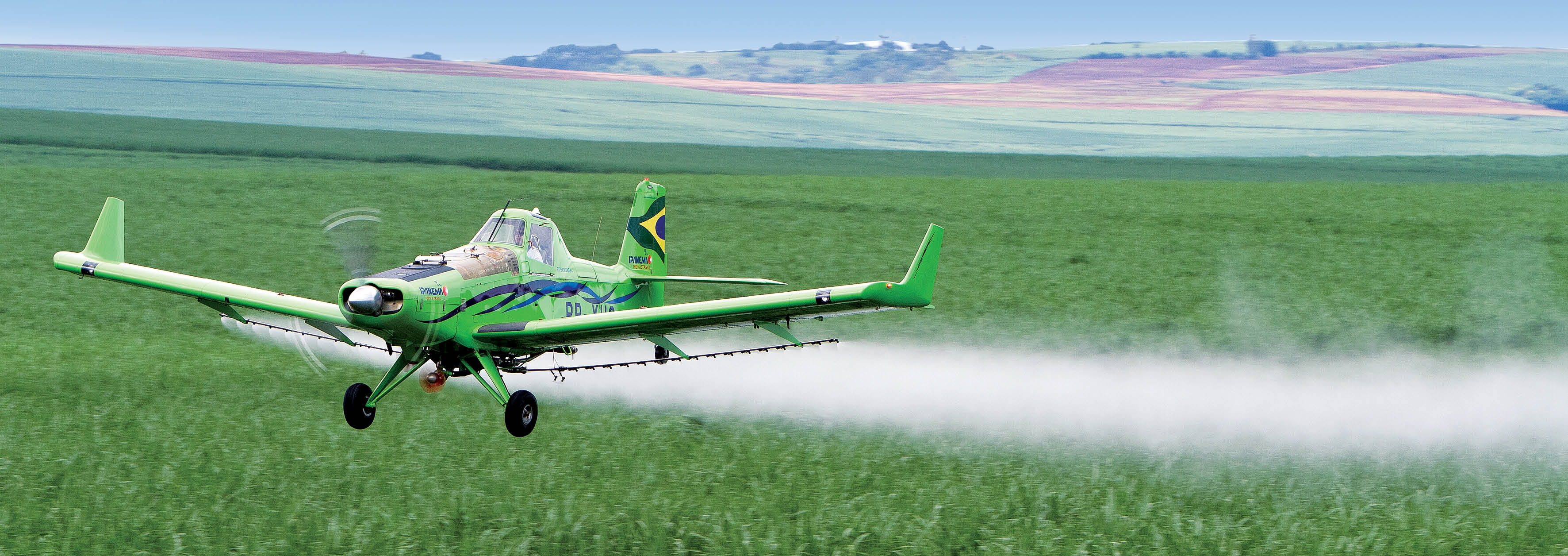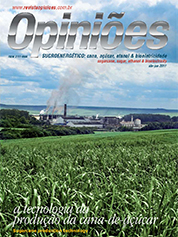Fábio Bertoldi Carretto
Sales Director at Embraer for the Ipanema Aircraft
Op-AA-28
Longevity in the field
With the modernization process that began in Brazil in the 30’s, the need for increasing the precision of equipment and technologies used by producers in agriculture was identified. Initiatives to combat pests and diseases that directly impacted successful production merited increased attention.
Since then, research was intensified to find ways to use machinery and equipment that not only was helpful, but resulted in concrete means to combat such adversities, providing producers gains in terms of time and savings. In 1946, a massive attack by grasshoppers in Rio Grande do Sul was, for the first time, combated using agricultural aircraft.
The success of this first operation in that State had a nationwide echo, inaugurating the practice of agricultural aviation in the country. The Ipanema was launched in 1969. A project developed as the result of a partnership between the Ministry of Agriculture and the then called CTA – Technical Aerospace Center.
With the creation of Embraer, some projects were transferred from the CTA to the company, which took over the development of the Ipanema. The aircraft was certified that same year and deliveries began in 1972, destined to both the domestic and foreign markets.
The first export occurred in 1975, to the Ministry of Agriculture of Uruguay, and in subsequent years the aircraft was also sold to Paraguay, Argentina and Senegal in Africa. When Embraer bought Neiva in the 80’s, the Ipanema then started to be manufactured in Botucatu, in the interior of the State of São Paulo.
When production began, the airplane used aircraft gasoline as fuel, and this continued for more than 30 years, until in 2004 Embraer launched a new aircraft model driven entirely by ethanol, making the Ipanema the first airplane built in series in the world to fly using this type of fuel.
This project, developed in partnership between Embraer and the CTA, had the objective of providing air-agricultural activities a new boost, given that studies showed that the aircraft, using ethanol – the same used in cars – apart from having a gain in terms of engine HP, would also entail a considerable reduction in its operational cost. In addition to 65% in operational cost savings, the new Ipanema consolidated significant environmental advantages, given that it started running on renewable fuel.
Expressed in numbers, considering the operation of the entire Ipanema aircraft fleet running on ethanol, savings in excess of 15 million Reais in direct costs were achieved, in addition to the non-emission of some 8 tons of tetraethyl lead to the atmosphere, directly impacting the ozone layer.
Since its launch, 125 ethanol driven aircraft units were delivered, as well as 200 conversion kits, totaling a fleet of 325 airplanes flying in Brazil and using this type of fuel. The technological development of this product is relevant mainly because issues related to alternative fuels and biofuels began to be viewed as essential for the near future of aviation.
This was one of the most important innovations implemented after the aircraft’s production started. The plane’s technological qualities, in addition to the advantages of aerial spraying, provide producers more precision and flexibility, allowing for more operational expediency, and also for applying pesticides immediately after the rains, in flooded areas and on uneven terrain.
They also increase productivity, because the plantations do not get crushed, the soil is not compacted and pests and diseases are not spread, given that no direct contact takes place with the affected plants. The Ipanema is marketed in aviation gasoline and ethanol versions, and these alternatives seek to meet the needs of producers in all regions of Brazil.
Apart from competitive acquisition and operation costs, the Ipanema counts on attractive credit lines offered by major Brazilian banks. The Ipanema stands out as an example of longevity and innovation. Leader in the Brazilian agricultural aviation market, with a share of about 75%, in 2010 it reached the total of 1,100 aircraft units delivered. In these 41 years, the Ipanema was used for applying pesticides and agricultural fertilizers, for seeding, re-populating rivers, combating insects and vectors, in the primary combating of fires, among other applications. Over these four decades, it has shown to be an instrument for the development and growth of Brazilian agribusiness.





